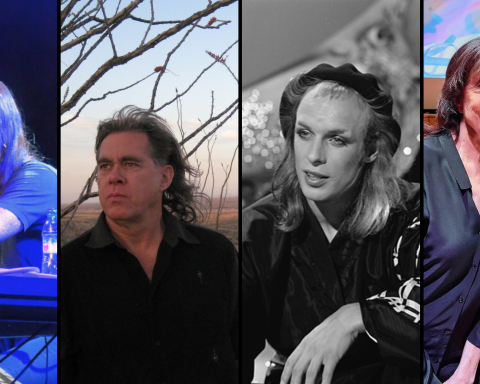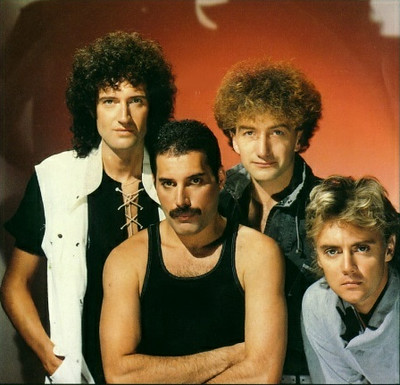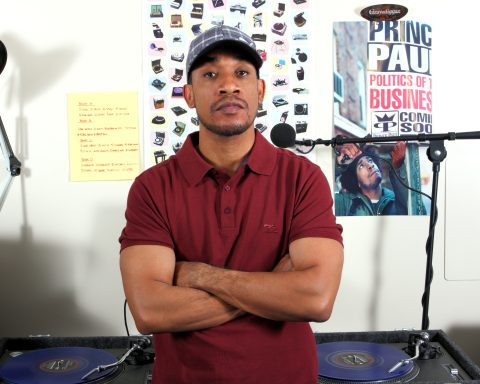In the late 1980s, everyone was looking for the new sound. With 1987’s D-50, Roland turned the world of synthesizers on its head by combining sampling with a digitized version of the familiar subtractive synthesis. The results were extraordinary, catapulting the D-50 not only to the top of synthesizer sales ranks but also the music charts. Everyone had to have one, and they all used it on the biggest hits of the day.
Let’s Get Digital
The D-50 conquered the world of music with its brand new—and very digital—form of synthesis. Called LA synthesis (that’s Linear Arithmetic, if you please), it combined PCM samples with the kind of subtractive synthesis that musicians and programmers already understood.
The genius was in how it came together. Memory was expensive at the time. To get around this, the engineers at Roland restricted samples to just the transients. By layering these with digitally generated waveforms (and a few PCM loops), you could coax all kinds of incredible and fascinating sounds out of it, ones that were both synthetic and highly realistic. Throw in an effects section (a world-first for a synthesizer) and a selection of inspiring presets by Eric Persing and Adrian Scott, and you had the makings of a massive hit instrument.
Playlist
Orinoco Flow by Enya (1988)
Irish singer Enya exploded onto the world stage in 1988 with “Orinoco Flow,” a beguiling song from her Watermark album that placed the D-50 front and center. The song is buoyed by the pizzicato string factory preset “Pizzagogo,” which appears throughout the track and forms the strident central melodic motif. Thanks to its plethora of atmospheric presets and unique new sound palette, the D-50 was popular with new age artists of all kinds—from chart toppers like Enya to those recording cassettes in their bedrooms.
Man in the Mirror by Michael Jackson (1987)
For Bad, his 1987 follow-up to Thriller, Michael Jackson made incredible use of the D-50’s unique synthesis qualities. It appears often on the album, on tracks like “Dirty Diana,” “Liberian Girl,” and especially “Man in the Mirror.” A number one hit, “Man in the Mirror,” uses the “Afterthought” preset as its main melodic sound, creating a charming yet atmospheric framework for Michael’s uplifting, gospel-informed vocals.
Bad Love by Eric Clapton (1989)
By combining two different tones into a patch, the D-50 was capable of complex and unique sounds. One of the more popular was the “O K Chorale” preset, which blended a musical lead with a noisy layer. Guitar hero Eric Clapton lassoed “O K Chorale” for the introduction to “Bad Love” on Journeyman, his 1989 album. Musicians often turned to the D-50 for atmospheric intros, as it sounded like nothing else around at the time.
Hazy Shade of Winter by The Bangles (1987)
Another song with a D-50-powered intro is “Hazy Shade of Winter” by The Bangles. The Simon and Garfunkel cover from the Less Than Zero soundtrack features an extended vocal introduction underpinned by one of the D-50’s most famous patches, “Fantasia.” Once you know the sound, with its distinctive PCM-powered chime, you’ll start to hear it again and again. In fact, it took on a life of its own outside the D-50, joining the General MIDI specification as “New Age Pad.”
Faith by George Michael (1987)
Another song with prominent use of the D-50 in its introduction is “Faith.” The opening track on the album of the same name fades in with a church organ playing the song’s main melody. This is—you guessed it—the D-50 running the aptly named “Pipe Organ” patch. However, it’s not an internal sound but one from the Roland PN-D50-01 card, Sustain Group. Aftermarket cards, both from Roland and third-party manufacturers, were incredibly popular. George Michael used another patch from the same card, “Wabi Sabi,” in “Father Figure.”
Children by Gary Numan (1988)
It wasn’t just big hits that featured the D-50. The instrument had broad appeal for all kinds of musicians. For the 1988 B-side to “New Anger,” synth pop legend Gary Numan turned to the D-50 for not one but two sounds, “DigitalNativeDance” and “Choir.” The sounds are particularly apt for Numan, as although they’re melodic, they’re on the synthetic and metallic side of things. Numan also used the D-50 on “Cold Metal Rhythm” and “America” from the album of the same period, New Anger.
Vanishing Point by New Order (1989)
In 1989, New Order released their most dance-friendly album, Fine Time. No strangers to the latest synthesizers, they made deft use of the D-50 on “Vanishing Point” for the main melody. Their patch of choice? Why, “Fantasia,” of course. Check it out in the song’s breakdown in all its glory.
Donkey Doctor by 808 State (1989)
808 State may be known for its love of vintage synthesizers, but the D-50 got a lot of use on the group’s early records. “We loved it at the time ’cause it was new,” Graham Massey told Future Music in 2008. “It had this glassy quality that would float over the dense rhythm stuff.” You can hear it on the 90 album, particularly “Donkey Doctor.”
Gun For Hire by Billy Ocean (1988)
The D-50 greatly impacted soul and R&B in the late ’80s, with producers like Jimmy Jam and Terry Lewis and Prince taking to it. Billy Ocean’s 1988 album Tear Down These Walls features the D-50 on several tracks, including “Gun For Hire,” which uses the “Horn Section” patch along with other popular patches like “Fantasia” and “DigitalNativeDance.”
Rico’s Gang Suicide by Eric Serra (1990)
With its unusual textures and built-in effects, the D-50 was popular with film and television composers. Luc Besson’s go-to composer, Eric Serra, was a fan, using it on the La Femme Nikita soundtrack, particularly on the opening track, “Rico’s Gang Suicide.” Other works incorporating the D-50 include Star Trek: The Next Generation and The Simpsons (yes, that’s a D-50 in the opening title theme).
Révolution Industrielle: Ouverture by Jean-Michel Jarre (1988)
The D-50 didn’t just back pop stars. Synthesizer aficionados recognized its power right away. It’s all over legend Jean-Michel Jarre’s 1988 album, Revolutions. Check out the opening track, “Révolution Industrielle: Ouverture,” to hear the third-party patch, “Machine Run,” clanking along throughout and acting as both rhythm and melody.
Shadow Flyer by Tangerine Dream (1991)
When it came time to soundtrack an atmospheric travelogue video of the Grand Canyon called Canyon Dreams, synth heroes Tangerine Dream made sure to include the D-50. On the track “Shadow Flyer,” you can hear the “Pipe Solo” patch providing the sound for the melody.
Ode to Don Jose by The Art Of Noise (1987)
Another synth-heavy group that called on the D-50 was The Art Of Noise, who used the D-50 on their first album without Trevor Horn, In No Sense? Nonsense! Less industrial than their earlier records, the album benefits from the presence of the softening D-50. Listen to “Ode to Don Jose” to hear the “O K Chorale” patch supporting the main sampled-voice melody.
Refreshed Memory
If you turned on the radio in the late 1980s, you would surely hear the D-50. It didn’t matter what genre it was, rock, pop, R&B, dance, new age—even soundtracks; the D-50 was the sound of the era. It’s almost shocking how ubiquitous it was. Now that you’ve refreshed your memory and found new inspiration from this selection of classics, try the Roland Cloud D-50 Software Synth.







